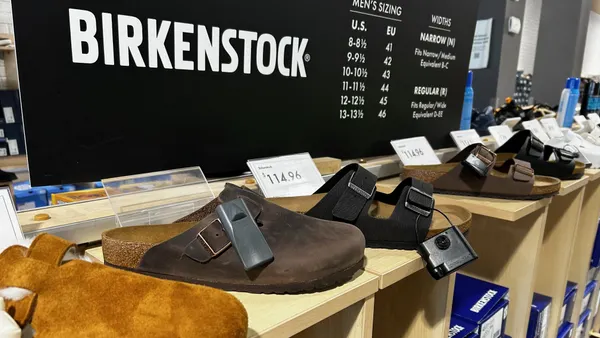Dive Brief:
-
Wal-Mart Stores Inc. spent some $3.8 billion in its fiscal 2016 year to boost sales online and in stores, according its annual report reported on by Quartz.
-
That netted the retail stalwart a 0.7% revenue drop year over year, its first net revenue drop in decades, though that still includes a whopping $478.6 billion in sales, more than quadruple Amazon’s revenue, Quartz says.
-
Wal-Mart is in the midst of a revamp, closing smaller stores that were aimed at competing with dollar stores and spending some $11 billion to redesign its website and improve stores.
Dive Insight:
Wal-Mart’s vast network of physical stores is a boon to its omnichannel efforts, and its ship to store and in-store pickup options are a hit with its customers.
Much has been made of its plans to increase hourly wages and training for its workers, which it says will cost $1 billion, but that’s just a portion of its outlays to boost sales. Wal-Mart faces the challenge of deciding which aspects of its culture, business, and operations it should keep — and which it should change.
This summer, Amazon reported Q2 results that pushed the e-retail giant's market value past Wal-Mart to over $264 billion in after-hours trading. This switch-up had many people saying that e-commerce has become an even more formidable threat in retail, on its way to play a more central part in the economy and retail itself.
But even without these positive results, Amazon enjoys immense patience from its investors, while Wal-Mart is under constant pressure to deliver growth—which has been flatter in recent years compared to its earlier double-digit results. Meanwhile, Amazon enjoys a reputation for investing in the long term and attracts investors with the same mentality, or at least with the patience to wait for positive results. While it may be easy to compare Amazon and Wal-Mart, given both of their massive size, their investors' contrasting approaches to growth is reflected in many of their present initiatives and future plans.
While Wal-Mart, like any major retailer, must offer web and omnichannel options for consumers, it’s not clear that e-commerce should be such a huge focus, considering its dominance in brick and mortar, which remains the great bulk of all retail sales.
Nick Egelanian, president of retail development consultants SiteWorks International, told Retail Dive that it would be a mistake for Wal-Mart to move too far from its brick-and-mortar stronghold for the sake of e-commerce growth.
“Wal-Mart is the biggest retailer in the world, and their system is selling through brick-and-mortar,” Egelanian said. “And they’re efficient. We know that Wal-Mart has the most efficient system in the world. We know that they break that product down and put it on the shelves, and they do that very efficiently also, and then they’re done. And selling on the Internet is not efficient. The whole methodology of selling on the Internet is completely foreign to what it’s like selling at a Wal-Mart.”
Plus, Wal-Mart may be chasing growth that isn’t really realistic, considering its longevity and immensity, he says.
“Wal-Mart is a very, very successful retailer, the most efficient distributor of goods in the world,” Egelanian said. “But they’re a mature company, and mature companies plateau. Does that mean you’re sick? No, it means you’ve hit a plateau, and you become a company that brings dividends instead of growth returns. Every business I’ve ever studied goes from growth to mature. You can’t grow anything forever.”














